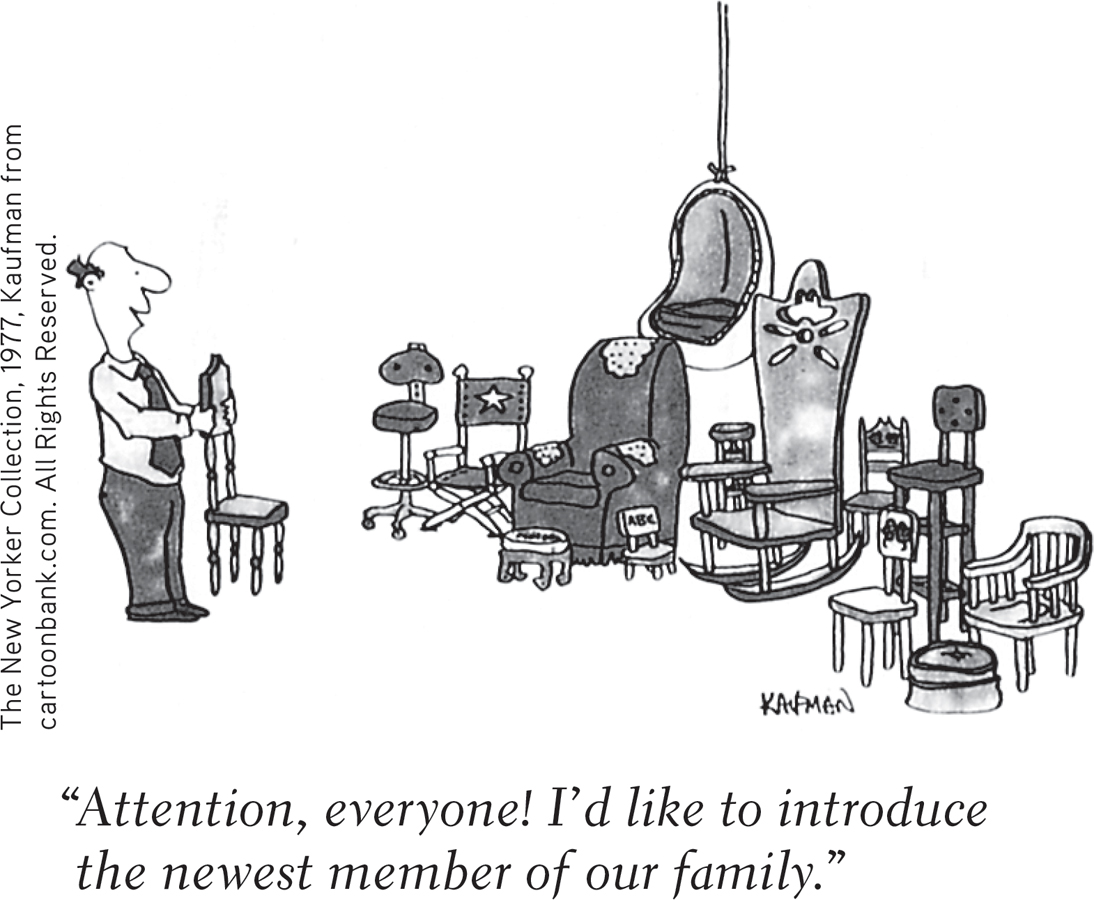27.1 Concepts
27-

PSYCHOLOGISTS WHO STUDY COGNITION FOCUS on the mental activities associated with thinking, knowing, remembering, and communicating information. One of these activities is forming concepts—mental groupings of similar objects, events, ideas, or people. The concept chair includes many items—
We often form our concepts by developing prototypes—a mental image or best example of a category (Rosch, 1978). People more quickly agree that “a robin is a bird” than that “a penguin is a bird.” For most of us, the robin is the birdier bird; it more closely resembles our bird prototype. Similarly, for people in modern multiethnic Germany, Caucasian Germans are more prototypically German (Kessler et al., 2010). And the more closely something matches our prototype of a concept—

 Figure 27.1
Figure 27.1Tasty fungus? Botanically, a mushroom is a fungus. But it doesn’t fit most people’s fungus prototype.
Once we place an item in a category, our memory of it later shifts toward the category prototype, as it did for Belgian students who viewed ethnically blended faces. For example, when viewing a blended face in which 70 percent of the features were Caucasian and 30 percent were Asian, the students categorized the face as Caucasian (FIGURE 27.2). Later, as their memory shifted toward the Caucasian prototype, they were more likely to remember an 80 percent Caucasian face than the 70 percent Caucasian they had actually seen (Corneille et al., 2004). Likewise, if shown a 70 percent Asian face, they later remembered a more prototypically Asian face. So, too, with gender: People who viewed 70 percent male faces categorized them as male (no surprise there) and then later misremembered them as even more prototypically male (Huart et al., 2005).

 Figure 27.2
Figure 27.2Categorizing faces influences recollection Shown a face that was 70 percent Caucasian, people tended to classify the person as Caucasian and to recollect the face as more Caucasian than it was. (Recreation of experiment courtesy of Olivier Corneille.)
Move away from our prototypes, and category boundaries may blur. Is a tomato a fruit? Is a 17-